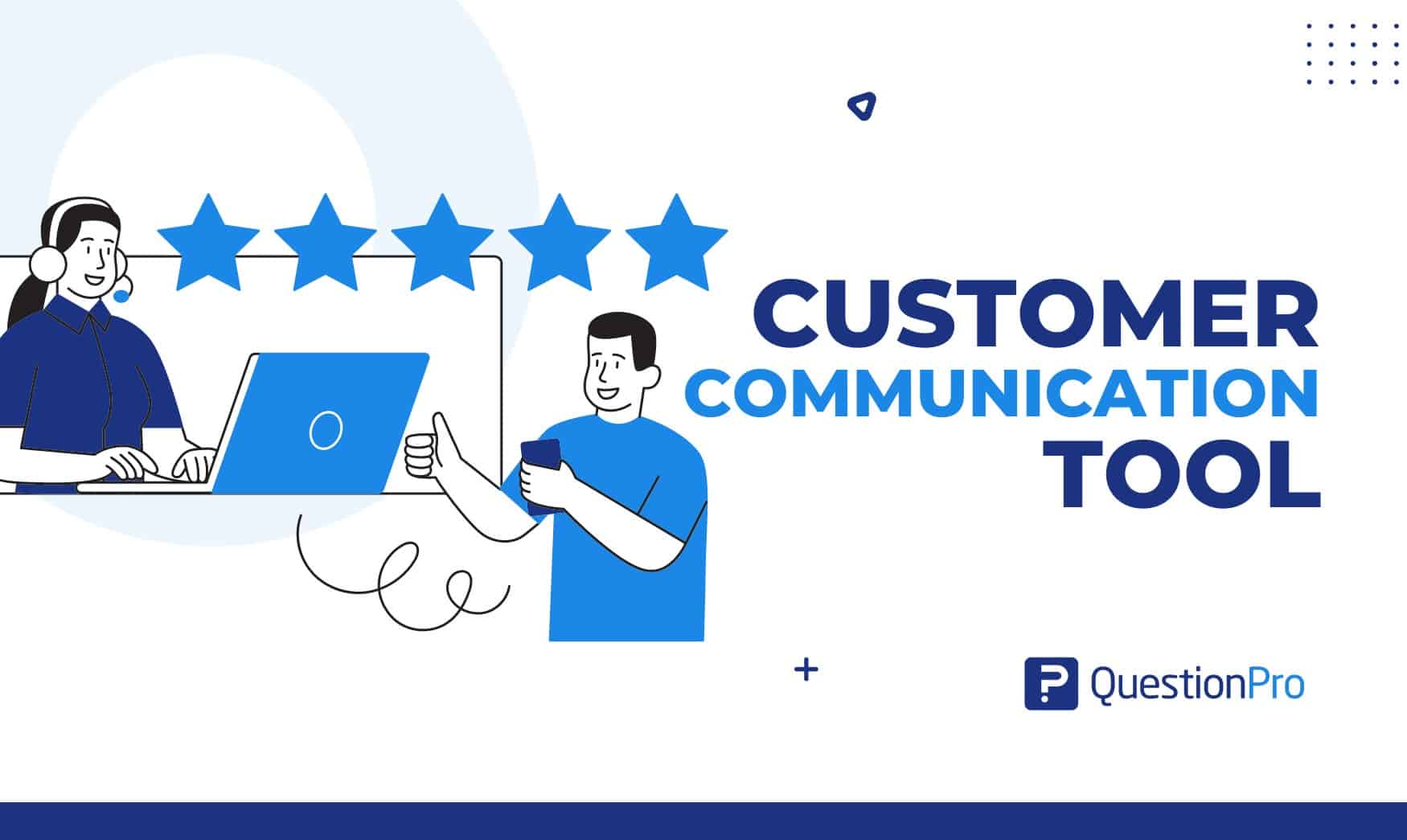
Effective communication lies at the heart of every business in today’s digital era. With customers expecting prompt responses and personalized interactions, companies continually seek innovative ways to engage with their audience. Enter customer communication tools – versatile platforms designed to streamline and enhance interactions between businesses and their clientele.
With features like video conferencing and call center software, the best customer communication tool empower businesses to provide comprehensive support and engagement opportunities, further strengthening customer relationships and driving long-term success.
Purpose of Customer Communication Tools
- Facilitate seamless interactions across various channels, including email, live chat, social media, etc.
- Centralize multiple communication channels into a single platform.
- Efficiently manage inquiries, feedback, and support requests, regardless of the channel through which they originate.
- Track customer behavior and preferences, providing valuable insights to tailor communication efforts effectively.
- Integrate with virtual call centers.
- Enable businesses to deliver exceptional service consistently.
These tools enable businesses to manage multiple channels, robust customer service platforms, call center software, desk software, live chat software, client communication software, online community software, and virtual meeting software, ensuring a cohesive and efficient approach to customer communications.
Organizations can build trust, loyalty, and advocacy among their customer base through timely responses and personalized engagements. Additionally, by harnessing data analytics and automation capabilities, businesses can gain helpful insights into customer behavior, preferences, and pain points, enabling them to refine their offerings and strategies accordingly.
What is Customer Communication?
Customer communication guides the interaction between a business and its customers through various channels such as email, phone calls, live chat, social media, and in-person interactions. It encompasses all forms of communication initiated by either party, including inquiries, feedback, support requests, sales transactions, and marketing messages.
Effective customer communication, a key driver of customer satisfaction and loyalty, involves conveying information, listening to customer needs, addressing concerns, and building relationships. It is vital in shaping the overall customer experience and influencing customer satisfaction, loyalty, and retention.
Businesses employ various communication strategies and tools to engage with customers, provide assistance, gather feedback, and deliver personalized experiences. By prioritizing clear, timely, and empathetic communication, businesses can build trust, foster loyalty, and differentiate themselves in the competitive marketplace.
What is a Customer Communication Tool?
A Customer communication tool is any software or platform designed to facilitate communication between a business and its customers across various channels such as email, live chat, social media, SMS, and more. These tools are instrumental in managing and enhancing customer interactions by providing features like messaging, ticketing systems, analytics, automation, and seamless integration with customer relationship management (CRM) software.
A customer communication tool aims to streamline communication processes, improve response times, personalize customer interactions, and foster strong relationships, driving satisfaction, loyalty, and retention. These versatile platforms enable businesses to manage customer conversations seamlessly across various channels, including email, live chat, social media, and more.
By centralizing communication channels into a unified platform, the customer communication tool ensure that customer inquiries and support requests are efficiently managed and responded to on time. It helps businesses maintain a positive brand image and allows them to capitalize on opportunities for upselling, cross-selling, and resolving issues before they escalate.
By harnessing the power of data-driven insights and personalized communication, companies can enhance customer loyalty and satisfaction , ultimately driving growth and success in today’s competitive marketplace.
Check out our new blog on Customer Loyalty Software at QuestionPro. It’s full of helpful info!
Types of Customer Communication Tools
Customer communication tools encompass a variety of platforms and technologies designed to manage customer interactions between businesses and customers across different channels. Here are some common types of customer communication tools:
1. Live Chat Software:
Live chat software enables real-time communication between customers and support representatives via text-based messaging through chat tools. Businesses can embed live chat widgets on their websites or mobile apps to provide instant assistance, answer questions, and resolve issues promptly with live chat software.
2. Project Management Tools:
Project management tools aid in team collaboration and communication for multiple projects. While primarily used for internal communication, these tools often include features for sharing project updates, assigning tasks, and coordinating workflows, which can indirectly impact customer communication by ensuring the timely delivery of products or services.
3. Contact Management Tools:
Contact management tools help businesses organize and maintain customer contact information, including names, email addresses, phone numbers, and interaction history. These tools typically include features for categorizing contacts, tracking communications, handling customer conversations, and managing customer support process systems.
4. Email Marketing Platforms:
Email marketing tools allow businesses to create, send, and track email campaigns to engage with customers, deliver promotional offers, and share relevant content. These platforms often feature automation capabilities, segmentation options, and analytics to track team performance and nurture customer communication management.
5. Social Media Management Tools:
Social media management platforms enable businesses to manage their presence across various social media channels, including Facebook, Twitter, Instagram, and LinkedIn. These tools streamline publishing, monitoring, and engagement activities, allowing businesses to interact with customers, respond to messages and comments, and track social media metrics.
6. Customer Relationship Management (CRM) Systems:
Customer Relationship Management systems centralized customer data and interactions, providing businesses with a comprehensive view of customer profiles, preferences, and engagement history. These desk software enable businesses to track leads, manage contacts, and automate communication workflows to personalize interactions and measure customer satisfaction.
7. Helpdesk and Ticketing Systems:
Helpdesk and ticketing systems streamline customer support operations by organizing and prioritizing incoming inquiries, such as email requests, support tickets, or mobile phone calls. These platforms often include features like ticket routing, knowledge bases, and performance analytics to optimize support processes and resolve issues efficiently.
8. SMS and Mobile Messaging Platforms:
SMS and mobile messaging tools enable businesses to send personalized text messages, notifications, and alerts to customers’ mobile devices. These platforms effectively deliver transactional updates, appointment reminders, and promotional offers, driving engagement and customer retention.
9. Voice and Video Communication Tools:
Voice and video communication tools facilitate real-time communication between businesses and customers via voice calls, video calls, or conferencing solutions. These platforms are beneficial for providing live support, conducting virtual consultations, hosting remote meetings, enhancing communication effectiveness, and building customer rapport.
10. Feedback and Survey Platforms:
Feedback and survey platforms enable businesses to collect customer feedback through surveys, polls, or feedback forms. These tools allow businesses to gather insights into satisfaction, preferences, and pain points, enabling them to identify areas for improvement and complete data-driven decisions to enhance the customer experience.
These are just a few examples of the diverse customer communication tools available to businesses today. By leveraging these tools effectively, businesses can optimize their customer communication strategies, build stronger customer relationships, and drive growth and loyalty in competitive markets.
Check the latest blog published by QuestionPro about Voice of the Customer Tools to learn more!
6 Best Customer Communication Tools for customer support teams
Helpful communication with customers is vital for success. As businesses strive to meet their clientele’s evolving needs and expectations, leveraging the right customer communication software is necessary for perfect customer communication capabilities.
1. QuestionPro
QuestionPro is a versatile and dynamic customer survey software and feedback platform. It offers businesses a comprehensive suite of tools to gather invaluable insights from their customer base. Companies can manage their data collection efforts to suit their needs and objectives through customizable surveys, polls, and feedback forms.
What sets QuestionPro apart is its robust set of features, including advanced analytics, real-time reporting capabilities, and multichannel distribution options. These features empower businesses to collect feedback, analyze it effectively, and take actionable steps toward improving their products, services, and overall customer experiences.
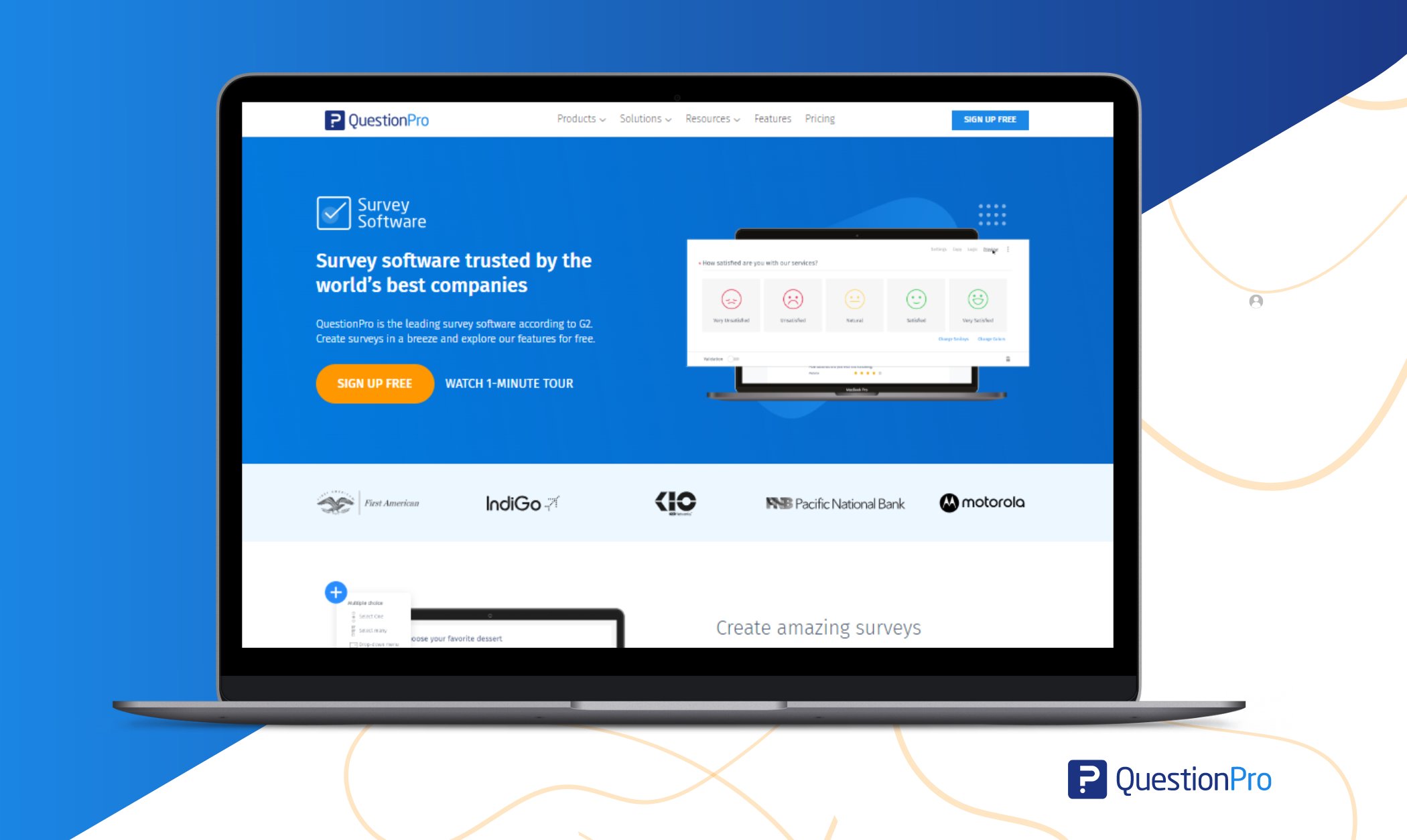
Features:
- Surveys & Feedback.
- Advanced Analytics.
- Customization.
- Multichannel Distribution.
- Reporting.
- Integration.
Limitation:
- Advanced features require more effort and resources to be effectively used.
Pricing: Most popular plans start at $99 per month, Team addition starts at $83, with pricing tiers available for businesses of all sizes. Custom pricing options are available for enterprises with specific needs.
2. LiveChat
LiveChat is a great live chat desk software solution renowned for effortlessly enabling immediate interactions between businesses and their users. By harnessing the power of text-based messaging, LiveChat empowers enterprises to engage with their audience directly on websites or mobile applications, fostering instant communication and connection.
Its robust features, including chat customization options, visitor tracking capabilities, and in-depth agent analytics, equip businesses with the tools they need to deliver unparalleled customer support experiences. From promptly addressing inquiries to guiding users through purchases, LiveChat enables organizations to elevate customer satisfaction levels while boosting sales conversions.
Features:
- Real-Time Messaging.
- Chat Routing.
- Chatbots.
- File Sharing.
- Canned Responses.
- Visitor Monitoring.
Limitation:
- Limited multichannel support.
- Scalability issues.
- Customization constraints.
Pricing: Starts at $20 per seat per month.
3. Zendesk
Zendesk is a leading customer service software platform offering a comprehensive customer feedback platform suite to manage and enhance customer interactions across many channels. From traditional email correspondence to real-time live chat support, social media engagement, and telephone assistance, Zendesk provides businesses with the means to effectively address customer inquiries and concerns regardless of the communication medium.
At the heart of Zendesk’s offerings lies its robust ticketing system, which streamlines the process of logging, tracking, and resolving customer issues. Its expansive knowledge base also empowers customers and support agents with readily accessible information and solutions.
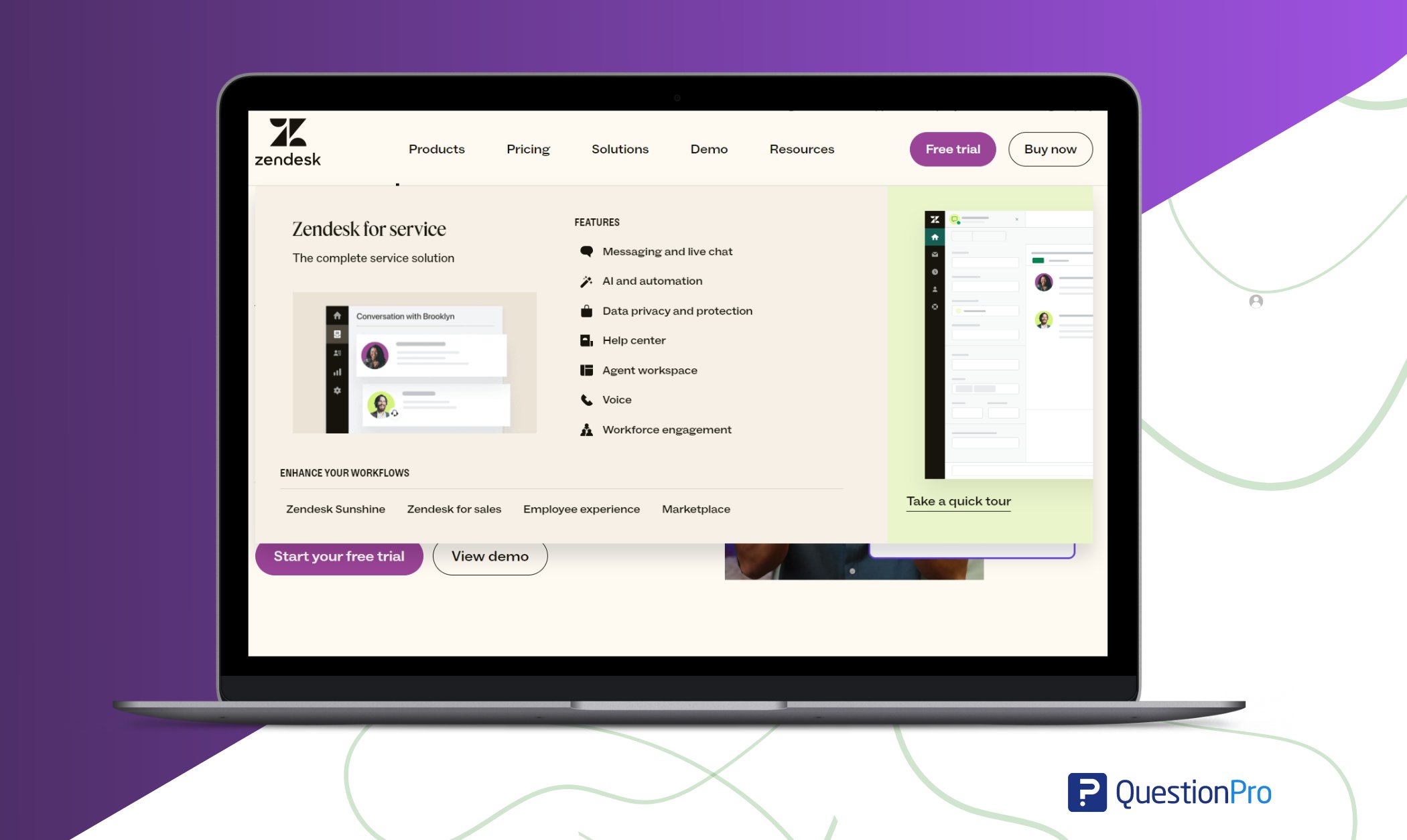
Features:
- Ticketing System.
- Multichannel Support.
- Knowledge Management.
- Automation.
- Reporting.
- Customization.
Limitation:
- Steep learning curve.
- Cost-prohibitive pricing.
- Integration challenges.
Pricing: Pricing starts at around $5-$19 per user per month for the Support Suite, with additional costs for other features like Chat, Talk, and Explore. Custom pricing is available for larger enterprises.
4. Kustomer
Kustomer is a customer service CRM platform that combines omnichannel support, automation, and data integration to deliver personalized customer experiences. With unified customer profiles, intelligent routing, and actionable insights, Kustomer enables businesses to streamline support operations, resolve inquiries efficiently, and improve customer relations.
Kustomer’s robust automation capabilities revolutionize support operations by automating routine tasks and processes. From simple ticket routing to complex issue resolution, the platform empowers agents to focus on high-value interactions that require human expertise and empathy. It drives operational efficiency and enhances the overall quality of customer service.
Features:
- Unified Customer View.
- Omnichannel Support.
- Case Management.
- Collaboration Tools.
- Integrations.
- Customer Insights.
Limitation:
- Implementation complexity.
- Cost considerations.
- Integration limitations.
Pricing: Starts at $89 per seat per month.
5. Mailchimp
The popular email marketing center software empowers businesses to build, send, and track email campaigns to engage with customers and drive growth. With features like drag-and-drop email builders, audience segmentation, and marketing automation, Mailchimp enables businesses to deliver targeted and personalized email communications that resonate with their audience.
From customizable landing pages and post-campaign analytics to A/B testing and predictive insights, Mailchimp provides a complete suite of solutions designed to optimize every aspect of the email marketing process.
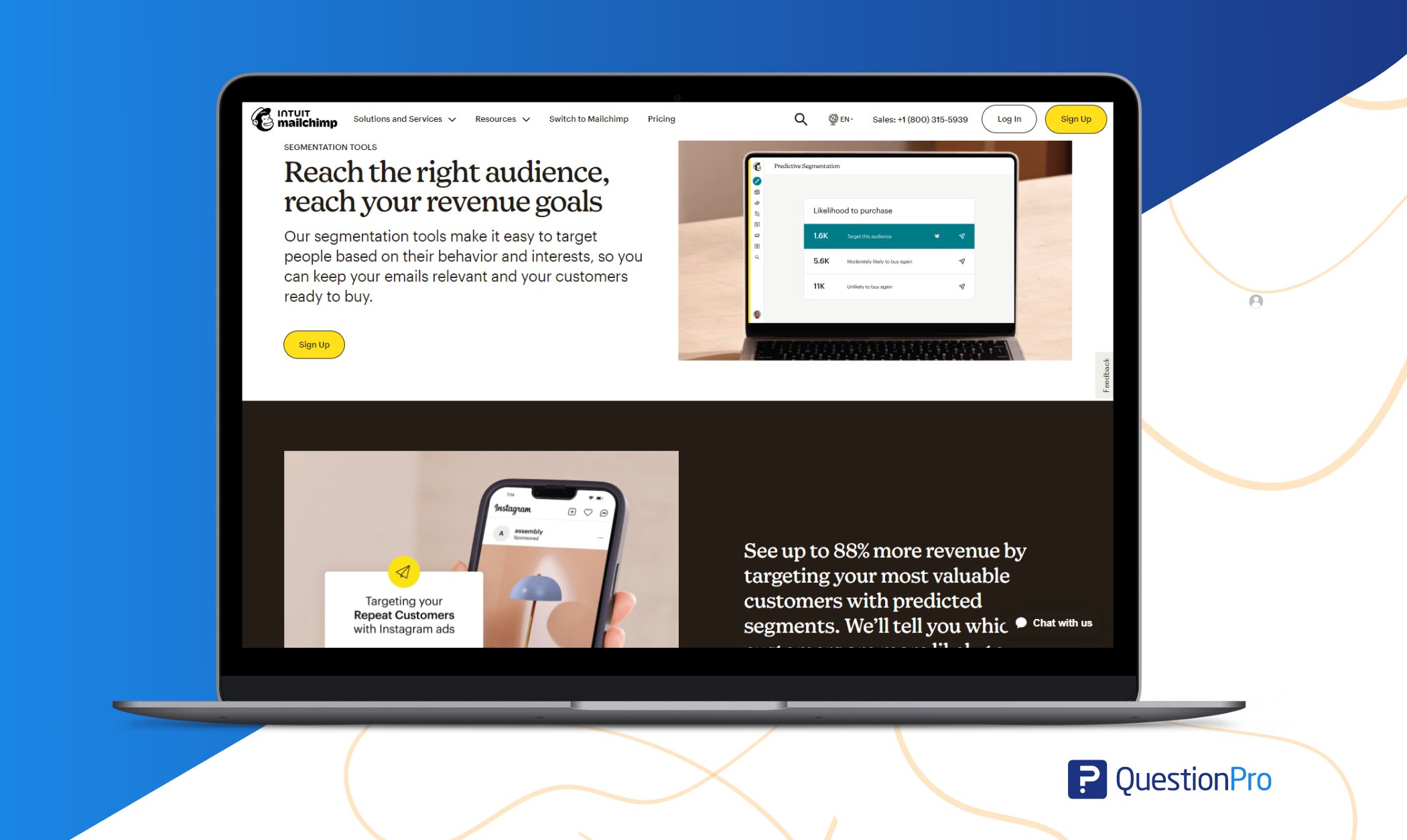
Features:
- Email Marketing.
- Audience Segmentation.
- Automation.
- A/B Testing.
- Reporting.
- Integration.
Limitation:
- Limited customer support.
- Automation complexity.
- GDPR compliance challenges.
Pricing: Starts at $6.50 per month for Essentials Plan.
6. Aircall
Aircall is a cloud-based mobile system designed to manage inbound and outbound calls for modern businesses efficiently. With features like call routing, analytics, CRM, and helpdesk software integrations, Aircall enables businesses to provide professional phone support, collaborate effectively across excellent customer support teams, and track call center performance metrics to improve customer communication strategies.
Whether you’re a small startup or a large enterprise, Aircall’s cloud-based infrastructure allows for seamless expansion and customization to meet evolving needs. With Aircall, businesses can enhance their customer communication strategies and future-proof their operations in an increasingly digital and interconnected world.
Features:
- Cloud-Based Phone System.
- Call Routing.
- Call Monitoring.
- Integrations.
- Voicemail & Recording.
- IVR.
Limitation:
- Integration complexity.
- Call quality issues.
- Limited advanced features.
Pricing: Starts at $30 per user per month.
As technology evolves, investing in the right customer communication tools remains essential for businesses committed to delivering excellent experiences and staying ahead of the curve.
Effective Customer Communication Methods
Effective customer communication methods encompass a range of strategies and tools tailored to meet customers’ diverse needs and preferences. Here are several methods that businesses can employ to enhance their communication with customers:
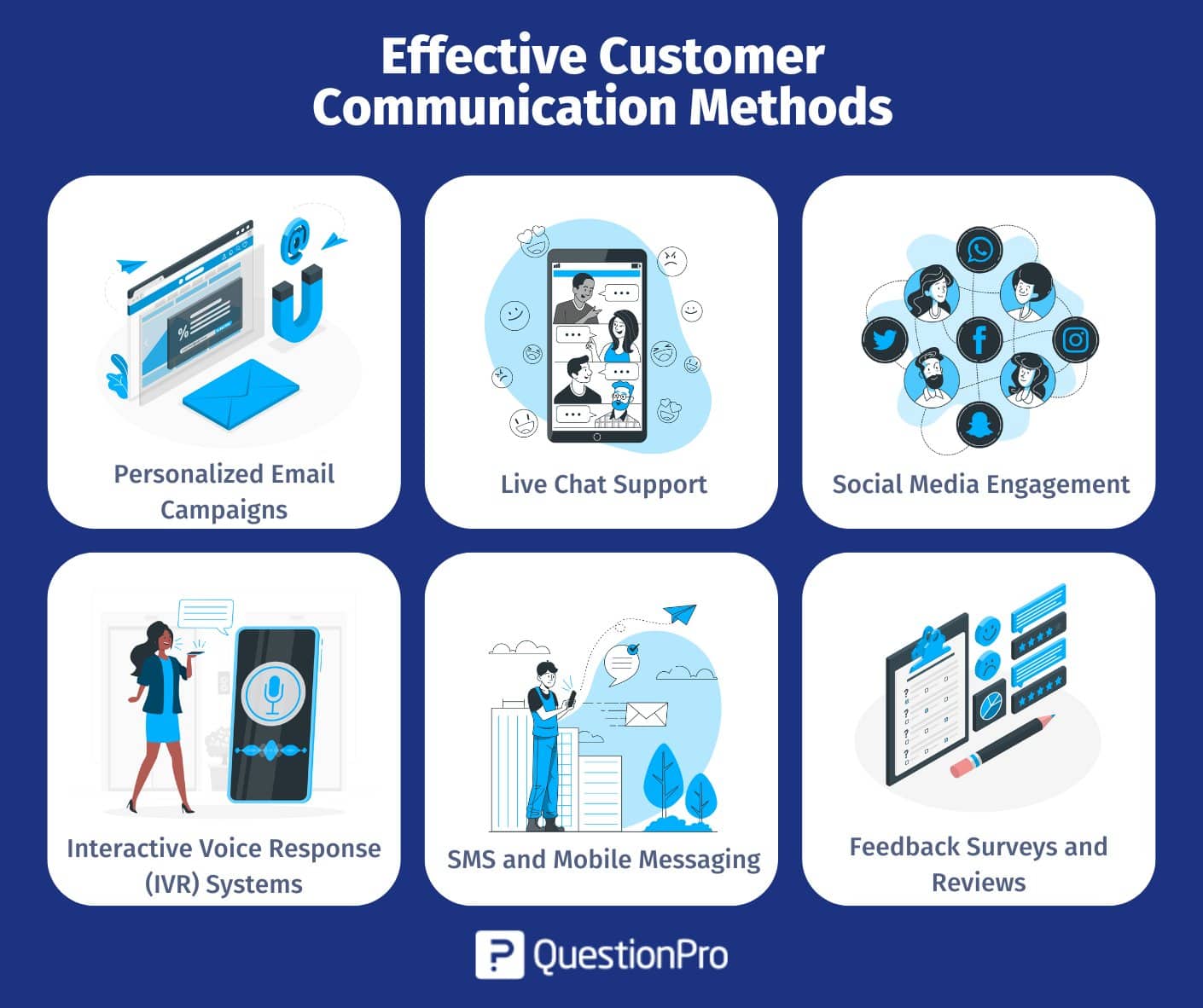
1. Personalized Email Campaigns:
Crafting personalized email campaigns based on customer data and preferences can improve engagement and conversion rates. Segmenting email lists and delivering relevant content, promotions, or updates can ensure your messages resonate with recipients.
2. Live Chat Support:
Live chat support embedded on your website enables customers to connect swiftly with a representative. This immediate accessibility offers assurance that their concerns will be promptly addressed, elevating their satisfaction levels and bolstering retention rates.
3. Social Media Engagement:
Engaging with customers on social media platforms empowers businesses to build relationships, address inquiries, and gather feedback. By maintaining an active presence and responding promptly to comments, messages, group voicemail messages, and mentions, businesses can demonstrate their commitment to customer service and brand transparency, fostering a sense of empowerment among their audience.
4. Interactive Voice Response (IVR) Systems:
IVR systems use automated prompts to route incoming calls and provide self-service options for common inquiries. By offering a menu of options and allowing customers to navigate to the appropriate department or service, businesses can streamline the call center software experience and reduce wait times.
5. SMS and Mobile Messaging:
Leveraging SMS and mobile messaging platforms enables businesses to reach customers directly on their smartphones with personalized updates, reminders, promotions, or transactional notifications. These channels offer high open rates and can be particularly effective for time-sensitive communications.
6. Feedback Surveys and Reviews:
Soliciting customer feedback through surveys, reviews, or feedback forms provides valuable insights into their satisfaction levels, preferences, and pain points. By analyzing valuable customer interaction and feedback, businesses can pinpoint areas for improvement and enact changes to elevate the customer experience.
Combining and adapting these customer communication methods to fit your business’s unique needs and audience preferences can cultivate strong customer relationships, drive loyalty, and differentiate your brand in a competitive marketplace.
Uses of Customer Communication Tools
Customer communication tools play a pivotal role across various sectors, aiding businesses in fostering meaningful interactions, addressing inquiries promptly, and cultivating lasting customer expectations. Here’s how these tools are utilized in different industries:
Retail and E-commerce:
In the retail and e-commerce sectors, customer communication tools are essential for providing personalized shopping experiences, managing order inquiries, and offering support throughout the customer journey.
Features like live chat support, email marketing, and social media engagement enable retailers to engage with customers in real-time, address concerns, and assist with product selection, ordering, and post-purchase inquiries.
Hospitality and Travel:
Effective communication is vital to delivering exceptional service and ensuring customer satisfaction with hotels, airlines, and travel agencies.
Customer communication tools such as reservation management systems, automated booking confirmations, and mobile messaging platforms enable businesses to streamline booking processes, deliver timely updates on travel arrangements, and provide personalized assistance to guests, enhancing their overall experience.
Healthcare:
In the healthcare industry, patient communication tools facilitate seamless communication between healthcare providers and patients, improving access to care and enhancing patient engagement.
Appointment scheduling customer communication management software, patient portals, and telemedicine platforms enable healthcare organizations to communicate appointment reminders, share test results securely, and provide virtual consultations, ultimately improving patient outcomes and satisfaction.
Financial Services:
Customer communication tools are integral to the financial services sector for delivering personalized financial advice, managing account inquiries, and facilitating secure transactions.
Banking institutions leverage secure messaging, mobile banking apps, and chatbots to provide round-the-clock support, deliver account notifications, and address customer queries regarding transactions, loans, or investment portfolios.
Technology and Software:
In the technology and knowledge management software industry, customer communication tools provide technical support, gather product feedback, and deliver software updates.
Helpdesk ticketing systems, knowledge bases, and community forums enable technology companies to provide self-service support options, troubleshoot technical issues, and foster user collaboration, ultimately driving product adoption and customer loyalty.
Regardless of the sector, other customer communication tools empower businesses to deliver exceptional customer experiences, build brand loyalty, and drive growth in a competitive marketplace.
How to Choose Communication Tools to Enhance Customer Experience
Selecting the right customer communication tool is crucial for enhancing the customer experience. Here’s a guide on how to choose the best tools:
Identify Customer Needs
- Understand your customers’ preferences and communication habits.
- Determine if they prefer email, live chat, phone calls, or social media.
- Tailor your software selection to meet their preferences.
Evaluate Features
Look for functionalities such as:
- Real-time messaging
- Automation
- Integration with CRM systems
- Analytics
- Multichannel support
Scalability and Ease of Use
Select tools that can grow with your business. Make sure the communication platform can manage more customer inquiries and support requests without losing performance. Choose user-friendly tools that are easy for both customers and employees to use. Avoid complicated interfaces or processes that could discourage users and block effective communication.
Integration Capabilities
Select tools that seamlessly integrate with your existing systems, such as CRM software, helpdesk, and e-commerce platforms. Integration ensures smooth data flow and enables a unified view of interactions.
Security and Compliance
- Prioritize tools that focus on security and compliance with regulations like GDPR or HIPAA.
- Ensure the protection of sensitive customer information.
Customer Support
Evaluate the level of the customer service team or customer support team provided by the customer feedback platform vendor. Ensure that reliable technical support is available in case of issues or emergencies.
Cost Considerations
When choosing communication tools, it’s essential to evaluate all associated costs to ensure they fit your budget while meeting your needs. Consider the following points:
- Subscription Fees: Monthly or annual subscription costs, discounts for long-term commitments.
- Setup Costs: Installation fees.
- Add-On Features: Additional functionalities beyond the basic package, AI-driven analytics, automation, or extra storage.
- Usage Limits: Number of users or seats, number of messages, calls, or emails
- Maintenance and Support: Ongoing maintenance fees, costs for technical support and customer service, fees for regular updates and upgrades
- Hidden Costs: Unexpected expenses, third-party integrations or additional services
- Value for Money: Cost against the benefits and features offered
If you’ve been searching for a hassle-free way to handle subscriptions, explore the top subscription management software options that can help make your billing processes smoother and contribute to the overall growth of your business.
Feedback from Users
- Collect feedback from daily users of the tools.
- Use their insights on usability, effectiveness, and overall satisfaction.
By carefully considering these factors and selecting communication tools that align with your business objectives and customer needs, you can improve the customer experience automation and drive long-term success.
Best Practices Better Customer Communication
Effective customer communication is essential for building strong relationships and fostering loyalty. Here are some best practices to enhance customer communication:
1. Active Listening:
Listen attentively to customer inquiries and feedback, demonstrating empathy and understanding. Acknowledge their concerns and validate their experiences before providing solutions or assistance.
2. Prompt Responses:
Aim to respond to customer inquiries and messages promptly, preferably within a predefined time frame. Quick responses show customers that their concerns are valued and help prevent frustration or dissatisfaction.
3. Personalization:
Tailor communication to each customer by addressing them by name and referring to previous interactions or preferences whenever possible. Personalized communication shows customers they are valued as individuals, not just as transactions.
4. Clear and Concise Customer Interactions:
Ensure that information is communicated clearly and concisely, avoiding jargon or technical language that could confuse customers. Use simple language and provide step-by-step instructions or explanations when necessary.
5. Multichannel Support:
To meet customers’ preferences, provide real time support through various communication channels, including email, phone, live chat, and social media. Ensure consistency in messaging and service quality across all channels to provide a seamless experience.
6. Transparency:
To build trust with customers, be transparent about policies, pricing, and processes. Inform customers about any changes or updates that may impact them, and maintain transparency regarding any limitations or challenges your business encounters.
7. Proactive Communication:
Anticipate customer needs and proactively communicate relevant information or updates. To keep them informed and engaged, notify customers of order status changes, product recalls, or upcoming promotions.
8. Feedback Collection:
Promote customer feedback and actively pursue opportunities for improvement based on their experiences. Use surveys, customer review platforms, feedback forms, or post-interaction surveys to gather insights and identify areas for enhancement.
9. Training and Empowerment:
Provide training and resources to frontline staff to ensure they can effectively handle customer inquiries. Empower employees to autonomously make decisions and resolve issues, as appropriate, to improve the customer experience.
10. Continuous Improvement:
Regularly review and analyze customer conversations and communication metrics to identify trends, patterns, and areas for improvement. Use this data to refine communication strategies and processes over time to better meet customer needs.
By implementing these practices, businesses can enhance their customer communication efforts, establish trust and loyalty, and ultimately achieve sustained success.
How QuestionPro Can be A Perfect Customer Communication Tool
QuestionPro can be a perfect customer communication tool due to its versatile features tailored for gathering feedback, conducting surveys, and analyzing customer sentiments. With its intuitive interface and customizable survey templates, businesses can easily create surveys to collect valuable customer insights.
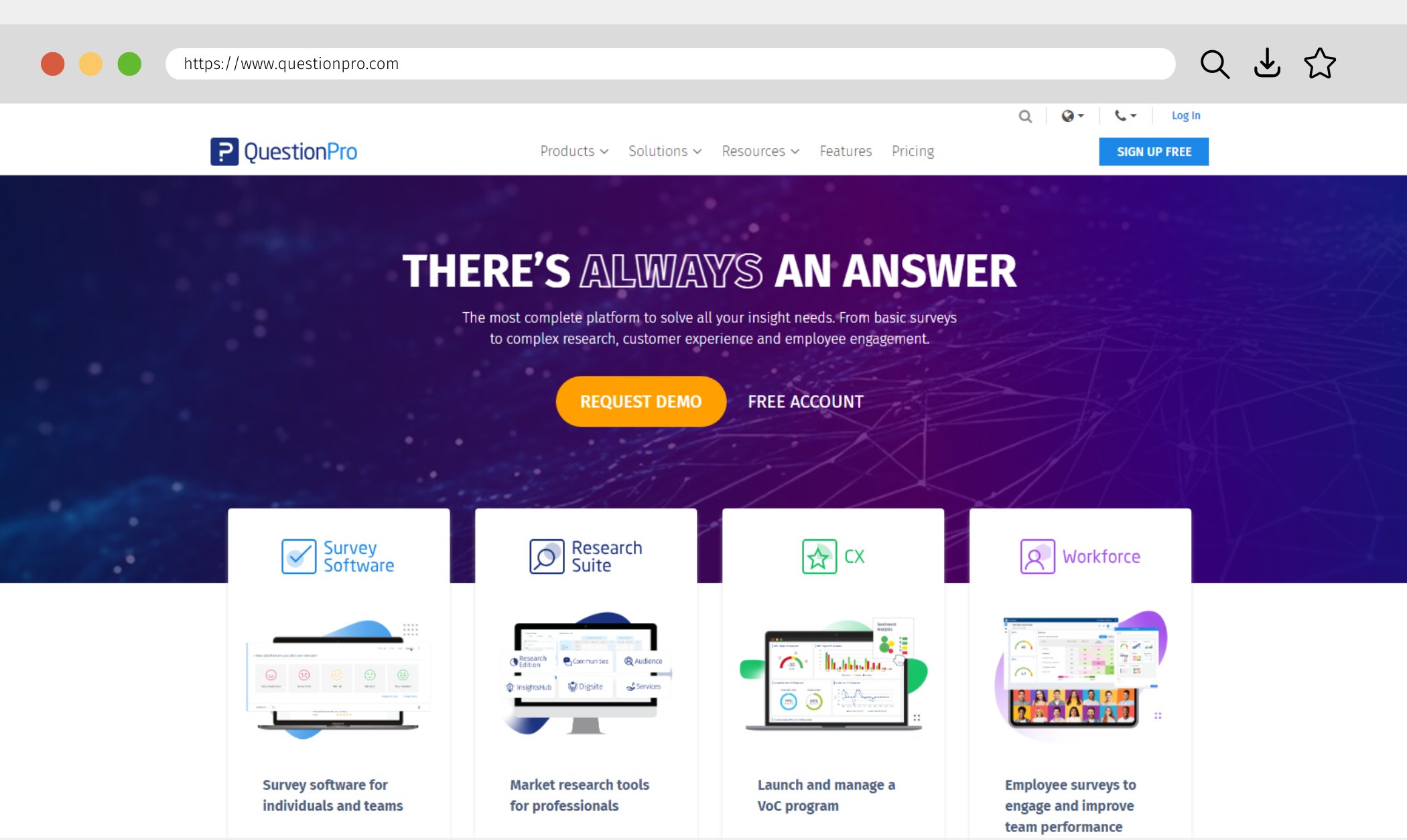
1. Versatile Survey Solutions:
QuestionPro offers versatile customer survey software that allows businesses to gather customer feedback through customizable surveys, polls, and feedback forms.
2. Real-Time Feedback Collection:
QuestionPro enables businesses to gather real-time customer feedback, empowering them to swiftly address issues and utilize data-driven insights to enhance the customer experience.
3. Analytics and Reporting:
The platform provides strong analytics and reporting features that allow businesses to analyze customer survey software data, identify trends, and gain actionable insights into customer preferences and satisfaction levels.
4. Multi-channel Engagement:
QuestionPro supports multi-channel engagement, allowing businesses to reach customers with various channels such as email, mobile, web, and social media, ensuring broader participation and higher response rates.
5. Integration Capabilities:
QuestionPro integrates with popular customer relationship management systems, allowing businesses to centralize relevant customer data and streamline communication workflows, ensuring a seamless and cohesive customer experience.
6. Customization and Branding:
The robust customer service platform offers extensive customization and branding options, enabling businesses to tailor surveys to match their brand identity and create personalized customer experiences.
7. Affordable Pricing Plans:
With affordable pricing plans starting at $99 per user per month, QuestionPro offers cost-effective comprehensive solution for businesses of all sizes, making it accessible to startups and large enterprises.
By leveraging the features and capabilities of QuestionPro, businesses can effectively communicate with customers, gather valuable feedback, and enhance the overall customer experience, ultimately driving satisfaction, loyalty, and business growth.
Benefits of a Customer Communication Tool
The benefits of a customer communication tool are numerous and impactful for businesses of all sizes. Here are some key advantages:
Improved Customer Satisfaction:
Practical communication tools allow businesses to address customer inquiries promptly, leading to higher satisfaction levels. By providing timely assistance and personalized interactions, businesses can enhance the overall customer experience.
Enhanced Customer Retention:
Strong communication fosters loyalty and trust among customers, increasing retention rates. By staying connected with customers and proactively addressing their needs, businesses can reduce churn and encourage repeat business.
Increased Efficiency:
Customer communication tools streamline communication processes, enabling businesses to handle inquiries more efficiently. Automation features, such as chatbots and auto-responses, help manage high volumes of requests, freeing up time for support teams to focus on more complex issues.
Better Insights and Analytics:
These top customer communication tools provide valuable insights into customer preferences, behavior patterns, and satisfaction levels. Businesses can better understand their audience by analyzing data collected through multiple communication channels and choosing strategies accordingly.
Cost Savings:
Practical communication tools can reduce operational costs by automating repetitive tasks and optimizing resource allocation. By improving efficiency and productivity, businesses can achieve a more significant ROI on customer service investments.
Competitive Advantage:
Businesses prioritizing communication and engagement frequently surpass competitors in terms of satisfaction and loyalty. These companies can distinguish themselves in the market through exceptional support and personalized interactions and allure new customers.
Investing in a customer communication tool is essential for businesses looking to create better customer relationships, drive loyalty, and thrive in today’s competitive landscape.
Conclusion
Customer communication tools are indispensable for businesses seeking to establish a strong customer journey and gain a competitive advantage. By enabling timely and personalized interactions across multiple channels, these specialized tools empower enterprises to address customer inquiries promptly, gather valuable feedback, and deliver exceptional support.
Furthermore, customer communication tools measure knowledge base satisfaction, foster loyalty, and drive successful business growth. By prioritizing communication and engagement, businesses can assist customers and draw new ones through positive word-of-mouth and referrals.
Ultimately, investing in a comprehensive customer communication strategy supported by robust tools and technologies is essential for businesses looking to succeed in a dynamic marketplace. By prioritizing customer communication and leveraging the right tools effectively, businesses can build lasting relationships with their customers, drive loyalty, and achieve sustainable success in the long run.
A Customer Communication Tool is any software or platform designed to facilitate communication between a business and its customers across various channels such as email, live chat, social media, SMS, and more.
CCM (Customer Communication Management) tools are software solutions that help businesses manage and streamline customer communications.
These tools create, personalize, deliver, and track various forms of communication, including emails, letters, SMS, and social media messages.
Four basic communication tools are:
1. Email: Digital tool for sending messages and files asynchronously.
2. Telephone: Real-time voice communication for urgent or complex conversations.
3. Instant Messaging (IM): Real-time text communication via platforms like Slack or WhatsApp.
4. Video Conferencing: Face-to-face communication through tools like Zoom.







